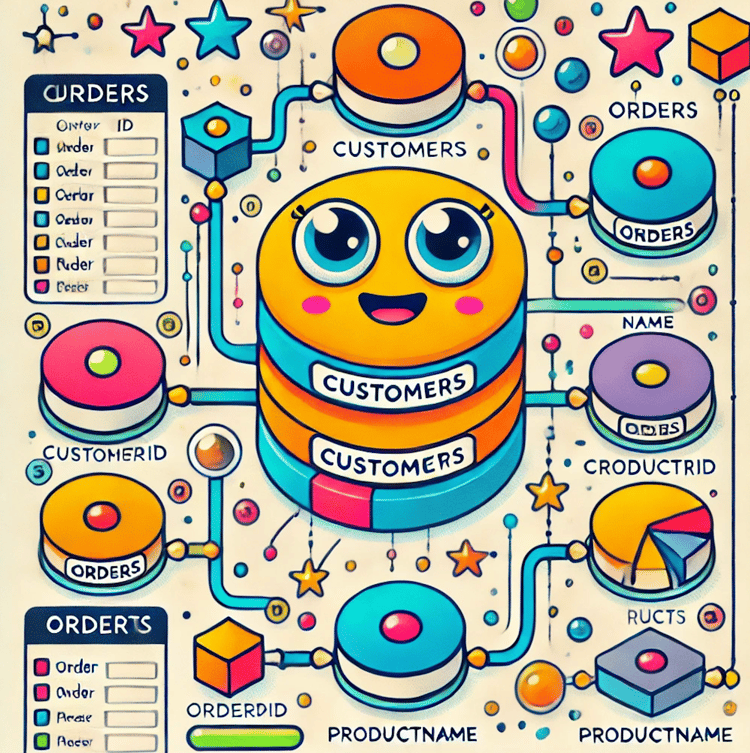Track
Data-driven marketing strategies are vital for businesses to thrive in today's digital era. In an increasingly competitive market, adapting quickly to changing trends is essential for staying ahead. This means data analytics is not only a nice-to-have but a MUST-have.
Businesses fall behind when they lack the know-how to derive valuable insights about consumer behavior, preferences, and trends. It prevents them from conducting targeted and personalized marketing campaigns, which falls short of customers' ever-rising expectations of the companies they buy from.
Additionally, by not embracing data-driven approaches, businesses hinder their ability to measure campaign effectiveness in real time, which prevents them from conducting agile adjustments for optimal performance.
This is where marketing mix modeling (MMM) comes into the picture. It’s a technique used to measure the impact of various marketing activities. In this article, we will cover its role in business, its components, limitations, and much more.
What is Marketing Mix Modeling?
Marketing Mix Modeling (MMM) as analytical approach that involves employing statistical techniques like multivariate regressions on sales and marketing time series data to evaluate how different marketing tactics (known as the marketing mix) influence sales. This process also includes forecasting the potential impact of future sets of tactics. MMM is commonly utilized to enhance the effectiveness of advertising strategies and promotional tactics, aiming to maximize sales revenue or profit.
The term "marketing mix" was first introduced by Neil Borden, a marketing professor at Harvard Business School, in 1949. Borden initially referred to the marketing mix as the set of marketing elements that a firm could use to achieve its objectives, encapsulating various components such as product, price, place, and promotion. This concept laid the foundation for modern marketing theory and became a fundamental framework for understanding and managing marketing activities.
But during the late 1990s and early 2000s, MMM experienced a decrease in popularity. It’s decline coincided with the rise of digital marketing channels and the emergence of alternative methodologies that focused on real-time analytics and digital attribution modeling. In this period, marketers shifted their attention towards more immediate and granular insights offered by digital analytics, temporarily diverting focus away from traditional MMM approaches.
However, MMM has since experienced a resurgence in popularity due to advancements in data science and analytics techniques, enabling marketers to better understand the holistic impact of their marketing efforts across various channels.
With the rise of omnichannel marketing, MMM offers a comprehensive framework for assessing the synergistic effects of different marketing activities on business outcomes. It also provides insights into long-term strategic goals and helps optimize resource allocation, driving sustainable growth and improving accountability for marketing spend in today's complex marketing landscape.
The Role of Marketing Mix Modeling in Business
Marketing mix modeling plays a crucial role in business. It provides valuable insights into the effectiveness of marketing strategies and guides decision-making. Namely, it helps businesses understand how various marketing inputs, such as advertising, promotions, pricing, and distribution, impact key performance metrics like sales, market share, and profitability.
By quantifying these relationships, marketing mix modeling enables businesses to optimize their marketing investments, allocate resources more efficiently, and make data-driven decisions to drive growth and competitive advantage.
Specifically, here are some different ways marketing mix modeling helps businesses thrive:
- Optimizing marketing spending helps businesses understand what marketing activities contribute most effectively to achieving business objectives.
- Budget allocation. After analyzing the ROI of various marketing channels and tactics, businesses can make more informed decisions about where to allocate their marketing budget, ensuring it’s directed toward the activities with the greatest yield.
- Forecasting and planning. Businesses can simulate the impact of changes in marketing strategies or external factors and use these insights to anticipate the potential outcomes and adjust their plans accordingly. This helps set realistic targets and improve overall business planning.
- Understanding customer behavior helps businesses understand how different customer segments respond to various marketing stimuli, enabling more targeted and effective marketing strategies.
- Continuous improvement. Monitoring key performance metrics and analyzing trends enables businesses to identify opportunities for optimization, test new strategies, and adapt to changing market conditions, ensuring that their marketing efforts remain effective and competitive.
Key Components of Marketing Mix Models
Using comprehensive and high-quality data sources and inputs is essential when using Marketing Mix Modeling (MMM). These components form the cornerstone of MMM, enabling a comprehensive and accurate understanding of how various facets of marketing impact a business's success.
The key components and data sources for effective MMM can be considered in terms of inputs and outputs. Inputs include all marketing variables and factors, whereas outputs consist of business metrics and KPIs.
Inputs (marketing variables and factors)
- Advertising spend. The amount of money allocated to advertising across various channels such as television, radio, digital, print, and outdoor advertising.
- Promotional activities. Expenditure on promotions, discounts, coupons, rebates, and other sales promotion activities aimed at increasing sales or brand visibility.
- Pricing strategies. Including regular pricing, discounts, promotions, bundling, and pricing elasticity.
- Distribution channels. Allocation of resources to different distribution channels such as online, retail, wholesale, direct sales, and third-party distributors.
- External factors (e.g., economic indicators). External factors such as economic conditions, seasonality, weather patterns, and industry trends may influence consumer behavior and market dynamics.
Outputs (business metrics and KPIs)
- Sales revenue. Total revenue generated from the sales of products or services over a specific period.
- Market share. The percentage of total market sales captured by the company's products or services compared to competitors.
- Customer acquisition and retention. Metrics related to acquiring new customers, retaining existing customers, and increasing customer loyalty and lifetime value.
Implementing Marketing Mix Modeling
Now that we’ve discussed marketing mix modeling, its role in business, and its key components, let’s examine what it takes to set it up. While the approach taken may vary from business to business, a generic outline looks pretty much as follows:
Step 1: Define objectives
To effectively execute marketing mix modeling, there must be a clearly defined objective. Businesses typically start by identifying what they want to achieve, whether it’s optimizing their marketing spend, forecasting sales, understanding customer behavior, or evaluating the ROI of marketing activities.
Step 2: Data collection
Marketing mix modeling depends on data. Thus, businesses may go to great lengths to ensure relevant data on marketing inputs and business outcomes is collected from internal and external sources. Even more effort goes into verifying that the data is accurate, complete, and representative of the time period and market being studied.
Step 3: Data preparation
The data undergoes cleaning and preprocessing to address missing values, outliers, and inconsistencies. Normalization or standardization is applied as necessary to ensure variables are comparable. Additionally, variables or aggregates are created to capture pertinent elements of both the marketing mix and business performance. Check out Data preparation theory and Data Preparation with Pandas to learn more about this step.
Step 4: Model selection
Various statistical models or modeling approaches are considered based on the analysis objectives, data characteristics, and available resources.l Common models utilized in marketing mix modeling include regression analysis, time series analysis, and machine learning algorithms.
Step 5: Variable selection
This is where consideration is given to which marketing variables should be included based on their relevance, impact, and business outcomes. They also take into account both traditional marketing inputs and non-marketing factors that may affect business performance.
Step 6: Model development
The marketing mix model is developed by estimating the parameters of the chosen model using statistical techniques. It’s then fit to the data to quantify the relationships between marketing inputs and business outcomes – check out Developing Machine Learning Models for Production to learn more about this step.
Step 7: Model evaluation
Model performance is evaluated to determine its ability to accurately predict business outcomes.
Step 8: Insights generation
Analysis results are interpreted to extract actionable insights for marketing strategy optimization. Key drivers of business performance are identified and recommendations are made for improving marketing effectiveness.
Step 9: Implementation
Recommended changes are implemented to marketing strategies based on insights generated for the model. This involves adjusting marketing spend, tactics, and messaging in response to the model's findings, in an attempt to optimize performance and maximize ROI.
Step 10: Monitoring and Iteration
Implemented changes are continuously monitored to assess the impact on business outcomes over time. Key performance metrics are tracked, and the modeling process is iterated as needed to adapt to changing market conditions, new data, or evolving business objectives.
Last but not least, findings and recommendations from the marketing mix modeling analysis must be communicated and reported back to stakeholders across the organization. A good practice during this process is to prioritize clarity and actionable insights to facilitate decision-making and get buy buy-in across the organization.
Common Challenges in Marketing Mix Modeling
While highly valuable, marketing mix modeling also comes with its share of challenges. Some common challenges include:
Data quality and availability
Obtaining high-quality, reliable data can be challenging. Data may be incomplete, inconsistent, or inaccurately recorded, making it difficult to conduct meaningful analysis. Additionally, accessing data from multiple sources and integrating different data types (e.g., sales data, marketing spend data, external market data) can be complex.
Data granularity and timeliness
The level of granularity and timeliness of data can impact the accuracy and effectiveness of marketing mix modeling. Limited granularity (e.g., aggregated data at a monthly or quarterly level) may obscure important insights, while delays in data availability may hinder real-time decision-making.
Attribution challenges
Determining the causal relationship between marketing activities and business outcomes can be challenging due to factors like lag effects, seasonality, external influences, and interactions between different marketing channels. It may be difficult to accurately attribute sales or conversions to specific marketing efforts, leading to ambiguity in results.
Model complexity and interpretability
Building and interpreting complex statistical models used in marketing mix modeling (e.g., regression models, machine learning algorithms) requires specialized expertise and may be challenging for non-technical stakeholders to understand. Simplifying complex models while maintaining accuracy and relevance can be a delicate balance.
Cross-channel integration
Integrating data and modeling across multiple marketing channels (e.g., offline and online channels) presents challenges due to differences in measurement methodologies, data formats, and attribution models. Ensuring consistency and comparability across channels is essential for holistic analysis and optimization.
Privacy and compliance concerns
Handling sensitive customer data and ensuring compliance with privacy regulations (e.g., GDPR, CCPA) can pose challenges for marketing mix modeling initiatives. Ensuring data security, anonymization, and compliance with legal requirements is essential to protect customer privacy and mitigate legal risks.
Real-world applications of Marketing Mix Modeling
Here are some real-world examples of how companies use MMM to optimize their marketing strategies and improve business performance.
Consumer goods
FMCG (Fast-Moving Consumer Goods) companies like Kellogg’s frequently utilize MMM to evaluate the influence of marketing endeavors like advertising, promotions, and pricing on sales. Through historical data analysis, companies discern which marketing channels and strategies yield the greatest return on investment (ROI), enabling strategic resource allocation.
Retail
MMM is employed by retailers to refine their promotional strategies, pricing decisions, and product assortment. Retailers can improve revenue and profitability by optimizing their marketing mix by knowing how different marketing tactics affect store traffic, basket size, and sales conversion.
Automotive
Utilizing MMM, automotive manufacturers and dealerships assess the success of their marketing initiatives through a range of media, such as digital, outdoor, and television advertising. Businesses can determine the most significant touchpoints in the customer journey and adjust their media mix by examining sales data in conjunction with marketing expenditure.
Financial services
Banks, insurance companies, and financial institutions utilize MMM to measure the impact of marketing efforts on customer acquisition, retention, and lifetime value. By analyzing data on customer engagement, direct mail, digital marketing, and advertising, financial services firms can increase return on investment (ROI) and optimize their marketing budgets.
Telecommunications
Telecom companies leverage MMM to understand the drivers of subscriber acquisition, churn, and revenue growth. By analyzing marketing spend alongside customer data (e.g., usage patterns, demographics), telecom firms can identify the most effective acquisition channels, pricing strategies, and retention tactics to drive business success.
Conclusion
Marketing mix modeling quantifies the impact of marketing inputs on business outcomes, guiding resource allocation and strategy optimization. Namely, it offers insights into the effectiveness of advertising, promotions, pricing, and distribution. Evolving marketing analytics leverage advanced data techniques to aid businesses in navigating complex digital channels, enhancing targeting, personalization, and ROI measurement for competitive advantage.
Further learning




